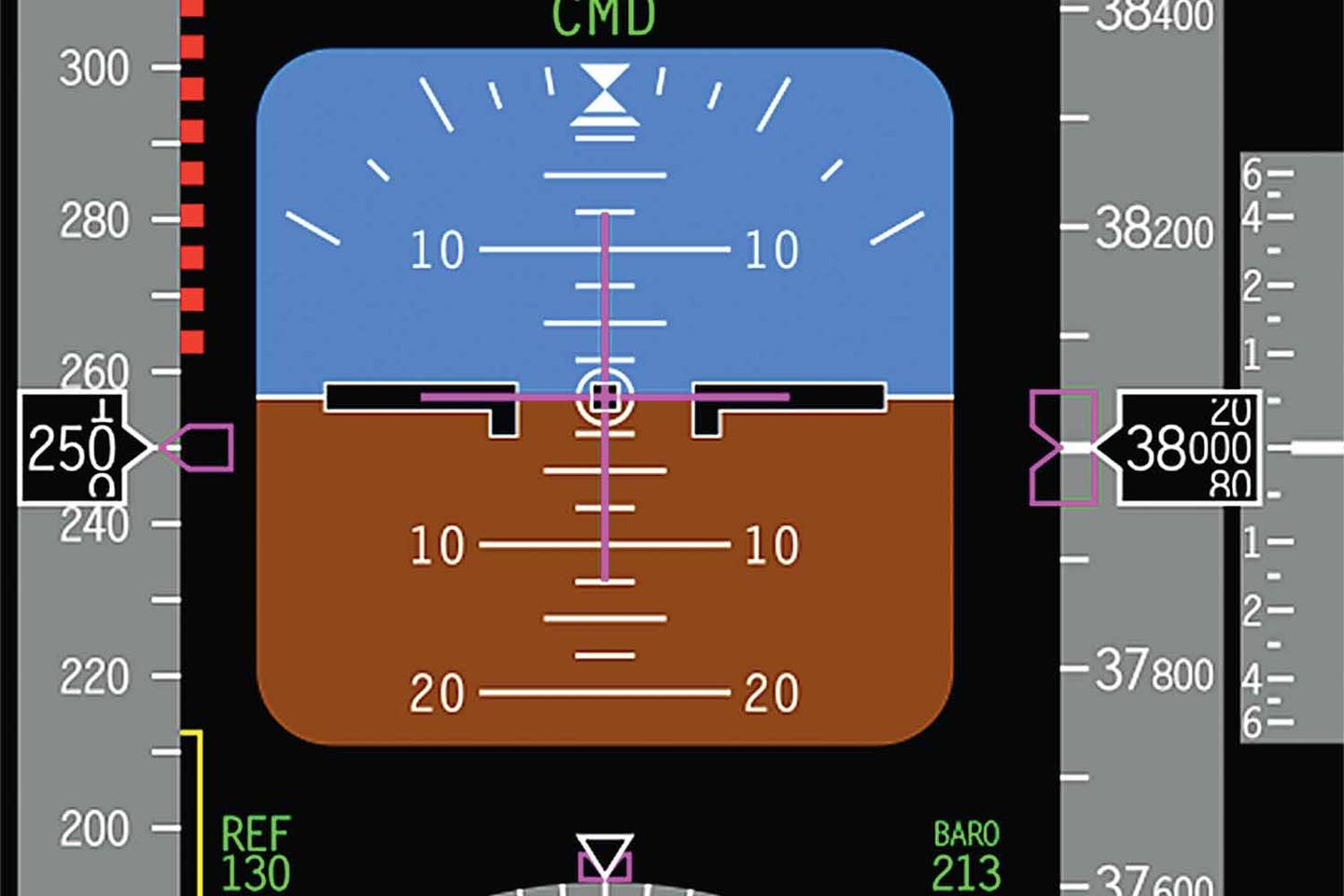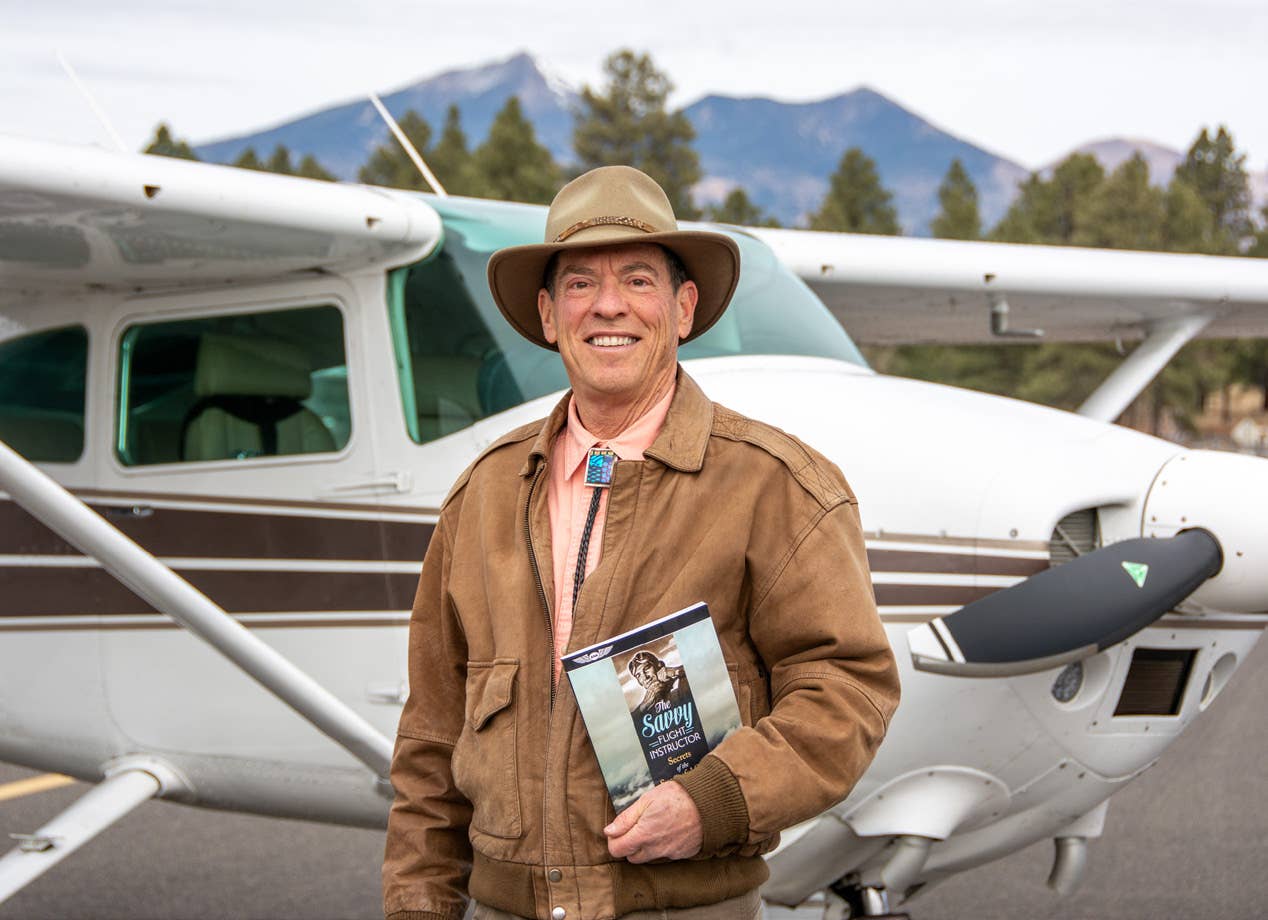
FAA regulations could change at any time. Please refer to current FARs to ensure you are legal. Flying
(Read part one here.)
VLOF
— Liftoff speed. Speed at which the aircraft becomes airborne. Back pressure is applied at VR (rotate) — a somewhat lower speed — so that liftoff actually happens at VLOF.
VMCA or VMC
— More commonly known as VMC (although VMCA is more correct). Minimum control speed with the critical engine (usually the left) inoperative out of ground effect in the air — “red line” — and most critical engine inop and windmilling; 5 degrees of bank toward the operative engine; takeoff power on operative engine; gear up; flaps up; and most rearward CG. In this configuration, if airspeed is allowed to diminish below VMC, even full rudder cannot prevent a yaw toward the dead engine. At slower speeds, the slower-moving wing — the one with the failed engine — will stall first. VMC is not a constant; it can be reduced by feathering the prop, moving the CG forward and reducing power.
VMCG
— Minimum speed necessary to maintain directional control after an engine failure during the takeoff roll while still on the ground. Determined using aerodynamic controls with no reliance on nosewheel steering. Applies to jets, turboprops or transport-category aircraft.
VMO/MMO
— Maximum operating limit speed for turboprops or jets. VMO is indicated airspeed measured in knots and is mainly a structural limitation that is the effective speed limit at lower altitudes. MMO is a percentage of Mach limited by the change to the aircraft’s handling characteristics as localized airflow approaches the speed of sound, creating shock waves that can alter controllability. As altitude increases, indicated airspeed decreases while Mach remains constant. MMO is the effective speed limit (“barber pole” on the airspeed indicator) at higher altitudes. MMO is usually much higher for swept-wing jets than for straight-wing designs.
VMU
— Minimum unstick speed. Slowest speed at which an aircraft can become airborne. Originated as a result of testing for the world’s first jet transport, the de Havilland Comet. During an ill-fated takeoff attempt, the nose was raised so high and prematurely that the resultant drag prevented further acceleration and liftoff. Tests were then established to ensure that future heavy transports could safely take off with the tail touching the ground and maintain this attitude until out of ground effect.
VNE
— Never-exceed speed — “red line.” Applies only to piston-powered airplanes. This speed is never more than 90 percent of VDF. G loads imposed by any turbulence can easily overstress an aircraft at this speed.
VNO
— “No” go there. Maximum structural cruising speed. Beginning of the yellow arc, or caution range. Theoretically, a brand-new aircraft can withstand the FAA’s 50 fps gust at this speed. Unfortunately, the pilot has no way of measuring gust intensity.
VR
— Rotation speed. Recommended speed to start applying back pressure on the yoke, rotating the nose so, ideally, the aircraft lifts off the ground at VLOF.
VREF
— Calculated reference speed for final approach. Final approach speed. Usually 1.3 times VSO or higher. Small airplanes: bottom of white arc plus 30 percent. Jets: calculated from landing-performance charts that consider weight, temperature and field elevation. To this speed jets typically calculate an approach speed (VAP) by adding (to VREF) half the headwind component plus the gust factor (to a max of 20 knots).
VS
— Stall speed or minimum steady flight speed at which the airplane is controllable. VS is a generic term and usually does not correspond to a specific airspeed.
VS1
— Stall speed or minimum steady flight speed in a specific configuration. Normally regarded as the “clean” — gear and flaps up — stall speed. Lower limit of the green arc (remember, “stuff in”). However, this is not always the case. It could represent stall speed with flaps in takeoff position or any number of different configurations. So VS1 is a clean stall, but the definition of “clean” could vary.
VSO
— Stall speed in landing configuration. Lower limit of white arc. Stalling speed or the minimum steady flight speed at which the airplane is controllable in landing configuration: engines at idle, props in low pitch, usually full wing flaps, cowl flaps closed, CG at maximum forward limit (i.e., most unfavorable CG) and max gross landing weight. Maximum allowable VSO for single-engine aircraft and many light twins is 61 knots (remember, “stuff out”).
VSSE
— Minimum safe single-engine speed (multi). Provides a reasonable margin against an unintentional stall when making intentional engine cuts during training.
VTOSS
— Takeoff safety speed for Category A rotorcraft.
VWWO
— Maximum windshield-wiper operating speed.
VX
— Best angle-of-climb speed. Delivers the greatest gain of altitude in the shortest possible horizontal distance. The speed given in the flight manual is good only at sea level, at max gross weight and with flaps in takeoff position. VX increases with altitude (about ½ knot per 1,000 feet) and usually decreases with a reduction of weight. It will take more time to gain altitude at VX because of the slower speed, but the goal is to gain the most altitude in the shortest horizontal distance.
VXSE
— Best single-engine angle-of-climb speed (multiengine, 12,500 pounds or less).
VY
— Best rate-of-climb speed. Delivers the greatest gain in altitude in the shortest time. Flaps and gear up. Decreases as weight is reduced, and decreases with altitude. Lift-to-drag ratio is usually at its maximum at this speed, so it can also be used as a good ballpark figure for best glide speed or maximum-endurance speed for holding.
VYSE
— Best single-engine rate-of-climb speed — “blue line” — (multiengine, 12,500 pounds or less).

Sign-up for newsletters & special offers!
Get the latest FLYING stories & special offers delivered directly to your inbox






